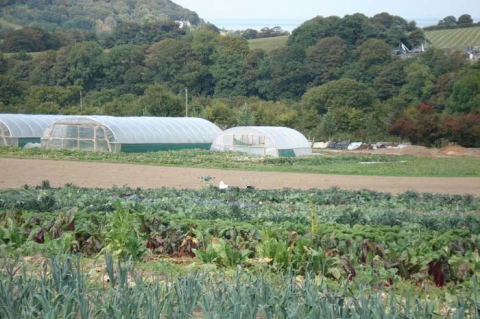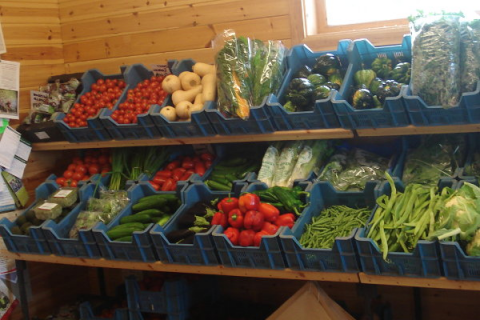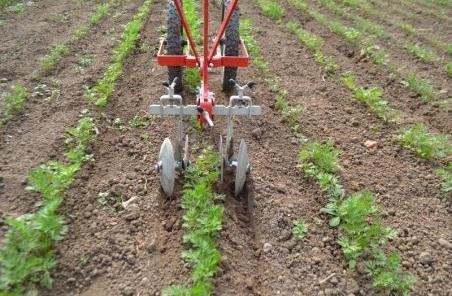Glebelands Market Garden Project Introduction: Evaluating the benefits of the Terrateck wheel hoe with Bio-Discs for weed control in vegetables
Site: Glebelands Market Garden
Technical Officer: Delana Davies
Project Title: Evaluating the benefits of the Terrateck wheel hoe with Bio-Discs for weed control in vegetables
Introduction to project:
Glebelands Market Garden is a 10 acre organic enterprise near Cardigan, supplying a farm shop onsite plus local restaurants, shops and other businesses. Crops grown include spring greens, pak choi, spinach, broccoli, salad leaves, beans, leeks, cauliflowers, fennel, courgettes, lettuce, squashes, cucumber and herbs.
All produce is grown to Soil Association organic standards using well-established techniques such as onsite composting, crop rotation and green manure crops to maintain soil fertility and plant health. The business supports ten employees over the year, amounting to five full time equivalents.
Figure 1. Glebelands Market Garden
Figure 2. Glebelands onsite farm shop
Weed control is a constant challenge in small and medium sized vegetable growing ventures that routinely depend on hand hoeing techniques requiring significant time and labour input. The business currently deploys two Glaser wheel hoe models which are used alongside hand hoeing but would find benefit in examining how to reduce or eliminate the hand hoeing altogether.
This project will evaluate the benefits of a French made Terrateck wheel hoe with Bio-Discs which appears to address several significant problems for smaller growers:
- Challenges of efficiently cultivating around drilled crops/earthing up small transplants
- Problems of using tractor mounted kit on sloping or uneven ground
- The lack of horticultural kit for small to medium growers (and lack of UK manufacture)
- Comparison with the well-known Glaser (Swiss) wheel hoe and similar older models which are still widely used.
The ‘Terrateck Market Gardening Hoe’ is a multi-purpose cultivator tool for market gardeners and home gardeners. It can be used to easily mechanise seedling preparation, hoeing, weeding and ridging work. A comprehensive range of attachments is available for facilitating the everyday maintenance of crops, and it is a multi-purpose and scalable tool that can be adapted to any type of soil and crop. It is claimed to be manoeuvrable, versatile and well built, and can provide a range of solutions that are essential to the requirements of diversified market gardening.
The Terrateck hoe will be fitted with Bio-discs which have two settings: one for mulching a row of vegetables and the other for precise weeding. Using the ridging position, the Bio-discs cover the row with earth thereby stifling the weed plantlets, making it ideal for bean, onion and leek seedlings.
The two parabolic discs come up neatly against the rows of seedlings, part the earth beside the seedlings while removing the earth together with the weed plantlets that are right beside the crop. The resulting weeding action is therefore very precise.
The Bio-discs are also fitted with two straight discs to control the working depth of the two parabolic discs. They permit running close alongside the row of seedlings. Using this weeding technique, less earth is moved compared with conventional stirrup hoes.
Figure 3. The Terrateck hoe fitted with Bio-discs
The wheel hoe will be specifically trialled on leek transplants at Glebelands where around 10,000 plants are set, normally followed by hand and Glaser wheel hoeing and spring tine cultivating, all several times. Use of the Terrateck wheel hoe has the potential to reduce the hours involved on the hand hoeing markedly, and time and labour cost comparisons, plus efficiency of weed control observations, will be made between the two systems.
In addition, the sooner a cleaner crop can be achieved, the earlier under sowing with ryegrass can be carried out. This is an important soil protection action which needs to be precisely timed to minimise competition with leek plantlets but aim to provide adequate growth to protect soil from winter weather, particularly soil erosion associated with an intense rainfall incidence.



